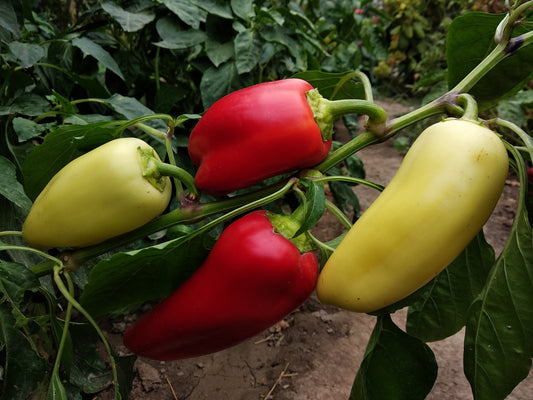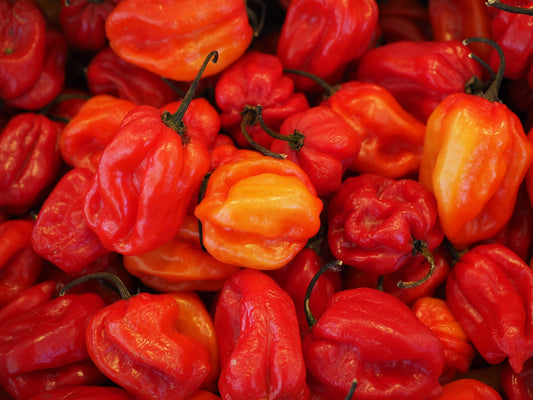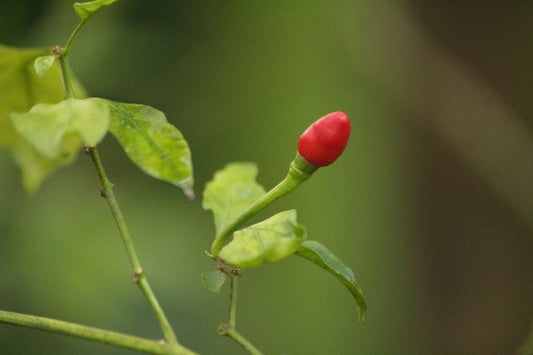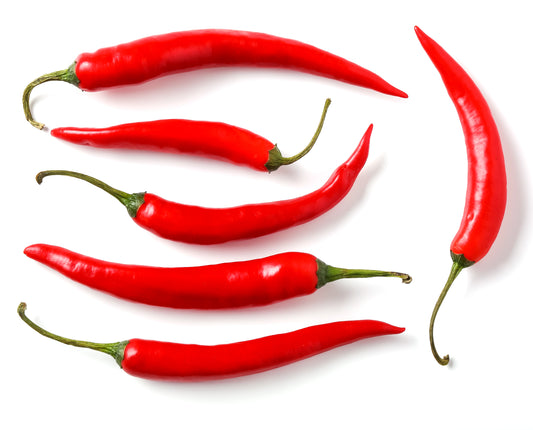Capsicum annuum is an incredibly versatile and interesting plant that has had a significant impact on the history of food and medicine. A member of the Solanaceae family, it is best known as the source of many of the world's most popular hot spices, such as peppers and chillies.
Its history dates back to antiquity, with the first traces of cultivation dating back over 7,000 years in Central and South America. From there, the plant was spread around the world by European settlers and travelers, becoming a staple of the cuisine of many different cultures. For example, peppers are a key ingredient in Mexican cuisine, and chili peppers are a staple in Asian, European, and African cuisines.
Besides being used as a spice, Capsicum annuum also has many medicinal properties. Contains compounds such as capsaicin, which is known to have anti-inflammatory and analgesic effects, it can be used to treat headaches, muscle aches and arthritis. In addition, capsaicin has been the subject of several studies to evaluate its effectiveness in treating other conditions, such as diabetic neuropathy, depression and obesity.
But it's not just its usefulness that makes it interesting. The cultivation of Capsicum annuum is also a fascinating example of adaptation and evolution. The plant has developed the ability to produce spicy compounds to repel pests and animals that might eat its seeds and compromise its survival. This natural defense is an extraordinary example of how nature has found innovative solutions to ensure the survival of its species.
Furthermore, the variety of shapes, colors and intensity of flavor of peppers and chillies is the result of centuries of selection and crossbreeding by growers. This has led to the creation of a wide range of crops, each with unique and distinctive characteristics. For example, some cultivars are very spicy, while others are sweet and not spicy, some are known for their elongated shape, while others for their round shape.
The cultivation of Capsicum annuum is an extremely important activity for many farmers and countries around the world, as it represents an important source of income and food. The plant is cultivated in many tropical and subtropical regions, but also in some temperate areas.
Furthermore, the cultivation of Capsicum annuum is also an example of sustainable and responsible agriculture. Many farmers use organic farming techniques and sustainable agricultural practices to preserve soil health and ecosystem balance, while also ensuring high quality and safe products for consumers.





